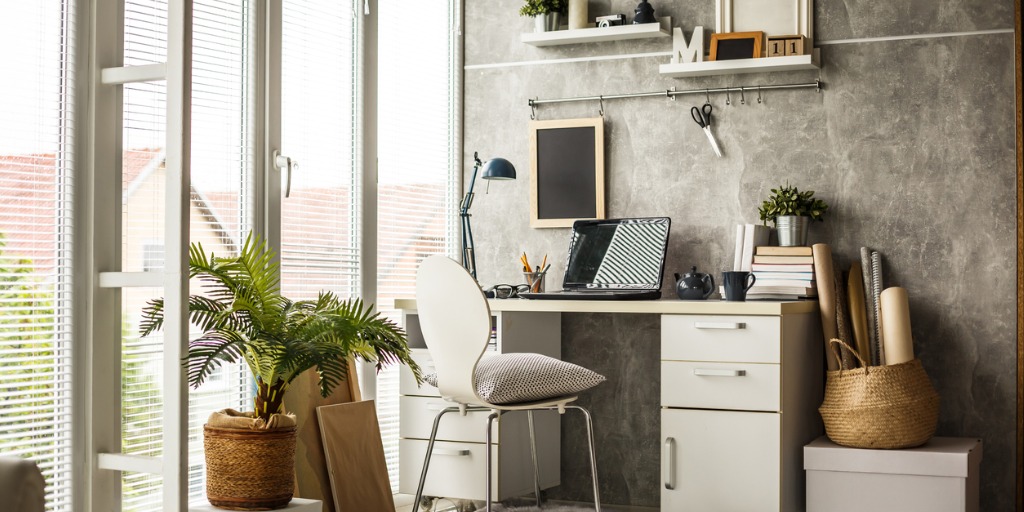5 Practical Tips To Help You Work Well From Home
COVID-19 has turned millions into remote workers overnight. While many people worked remotely prior to Corona and many corporations are advocates of the increased wellbeing and even higher levels of productivity that result, this sudden imposition, and even isolation may take some time to get used to.
Many of us who work from home do so voluntarily, typically working one or two days per week, out of the office. Those two days are balanced with office days giving us the opportunity to interact with our teams, update our managers, problem solve, analyse and be creative around our work goals as well as simply socializing over coffee with a wider spread of employees.
Remote working takes more than walking to your kitchen table and opening your laptop. Following on from last week’s post on productivity tips for remote workers, here are five practical tips to help you work well from home.
1 Create an office space
In your office, you probably had a pretty good set up right? A large screen positioned at the right height, good lighting, footrest, roomy desk and so on. If you didn’t have an opportunity to bring home your office seat or a better screen, create the best approximation like this:
- Design a workspace. Pick a bright, well-lit location, preferably near a window and set up.
- Ensure your screen is at eye level, even if that means propping it up on some books. Ideally, the top of your monitor should be just below eye level.
- Sit in the best seat you have. If you have an office chair that’s perfect. The main message here is don’t try to work from your bed or sofa/couch. This is bad for your back and your motivation!
- If you don’t have a footrest, pop a box under your feet, ideally your hips and thighs should form 90-degree angles.
- Do NOT, repeat NOT, sit for extended periods. Vary your posture and at least every hour, stand up and walk around.
2 Dress for work
What you wear influences your mindset. A recent study highlighted that clothes have symbolic meaning and influence the wearer. Don’t start work in your pjs, put on work attire. This can have a double benefit. Firstly, it affects your mindset positively, and secondly, you’re ready for that impromptu video conference.
In addition, if you’re working with children at home, your kids will recognize the work outfit and you can explain that when you change back to your sweatpants, they’re welcome to come and chat/play etc.
3 Connect Socially
On a more important personal level, people are social beings and being deprived of connection raises stress levels. Lonely people have higher levels of cortisol, the stress hormone.
Using whatever platform, preferably video-based, check-in with colleagues on a social front daily. If you are managing a team, check-in with each of them at least once a day. If you are running a meeting, give every participant a chance to update, talk or contribute during the session.
Remember quieter team members are frequently drowned out by more ‘shouty’ ones, all good, but in these challenging times, we must watch out for everyone. If someone doesn’t get a chance to speak, connect with them later on a one-to-one basis and find out how they are, what’s going on and how you can help.
4 Move it!
Many remote workers sit down to work in the morning and get out of their chair five hours later. When working from home, you miss the physicality of the work area, the quick trip to the coffee area, the walk to the printer, the lunch break, the call into the meeting areas and so on.
Break up your day by creating a schedule with planning time, connecting time, writing time, chop them into 45 minutes chunks and in between, get up and walk around. Make a coffee, pop outside for a five-minute walk, and ring a colleague. Chop, change and chunk your day. You’ll find it more productive in the long run.
5 Eat, sleep, pray
And lastly why not follow Elizabeth Gilbert’s bestselling title and do just that? Take a lunch break, eat some healthy food, cultivate great sleep hygiene – that means not taking your cell phone into your bedroom where the blue light will disrupt your night’s sleep – and why not take some time to meditate or simply take time out.
Finally, try to look on the bright side of the situation. Not everyone can work from home, many of our health care professionals must show up on the front line and work in close contact with others. You may even learn a lot during this uncomfortable but enforced isolation, how to communicate well virtually, how to self-organize and time manage and the value of human contact and social engagement and how we may value even more when it comes back.







